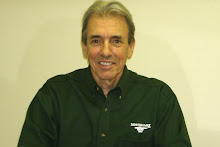
Paralyzing the PACE: Florida’s property assessed clean energy program likely strangled by Fannie Mae and Freddie Mac
Posted on July 19, 2010 by greenbuildingsubcommittee
The Florida legislature recently took a step towards creating a more sustainable future for our state. On May 27, 2010, Governor Crist signed into law House Bill 7179, which created Florida’s version of the Property Assessed Clean Energy (PACE) program.
lorida’s PACE bill enables local governments to levy non-ad valorem assessments to fund improvements related to energy efficiency,conservation,renewable energy and wind resistance. This type of program is more commonly known as a land-secured financing district or special assessment, which Florida municipalities have long used as a tool to finance projects that serve a public purpose, including street paving and the creation of parks. The novelty of the PACE program is that it is not a mandatory ad valorem property tax, has minimal fiscal impact on local governments, is not linked to the financial credit status of the property owner, and is completely voluntary. The program shows promise as an innovative, no-taxpayer subsidy approach to financing individual energy efficiency and renewable energy projects without the traditional barriers: large upfront costs and difficulty of financing them.
Under a PACE program, property owners borrow money from a newly established “municipal financing district” to purchase eligible technologies that are determined at the local level.
PACE programs are funded through the issuance of local revenue bonds. A PACE bond is a bond where the proceeds are lent to commercial and residential property owners to finance energy retrofits (efficiency measures and small renewable energy systems) and who then repay their loans over 20 years via an annual special assessment on their property tax bill. The bonds therefore act as a lien on the property until the amount is paid off. If the consumer sells the property, the tax would then be paid by the new owner. For many home and business owners, the annual energy cost savings from the retrofitting will exceed the cost of the annual repayment.
Unfortunately, on July 6, 2010, the Federal Housing Finance Administration (FHFA), the agency that regulates mortgage finance giants Fannie Mae and Freddie Mac, issued a letter effectively bringing PACE programs across the Country to a screeching halt. The July 6th letter expresses FHFA’s new requirement position that it will not purchase loans subject to PACE liens. The tension lies in FHFA’s concern with the “senior liens” or “first liens,” which result from the tax assessment on properties participating in a PACE program. The significance of the senior PACE lien is that if the property goes into foreclosure the PACE lien must be satisfied before the mortgage lender gets any money. In short, FHFA has “safety and soundness concerns” resulting from a combination of “first liens that disrupt a fragile housing market and longstanding lending priorities, the absence of robust underwriting standards to protect homeowners and the lack of energy retrofit standards to assist homeowners, appraisers, inspectors and lenders [to] determine the value of retrofit products.”
From a practical standpoint, FHFA’s blanket rejection of residential loans subject to PACE liens eliminates or restricts one of the most appealing aspects of the PACE program: the ability to make energy efficient improvements today and either pay the costs off over time or pass the costs off to future purchasers. Banks generally want to sell their loans to Fannie Mae or Freddie Mac, so under FHFA’s new rules, whenever a homeowner with a PACE loan seeks to refinance, the homeowner will have to pay off the PACE lien in full. In addition, whenever a homeowner with a PACE loan seeks to sell their home to a buyer using financing, the homeowner will have to either pay off the PACE loan or negotiate full payment of the PACE lien by the purchaser. The restrictions created by the FHFA’s position and the orders it has issued to Fannie Mae, Freddie Mac, and the 12 Federal Home Loan Banks have served to bring PACE programs everywhere to a complete halt.
There will have to be a significant push in favor of PACE programs on a state and federal level if one of the most promising renewable energy programs to date is going to be saved. Some commentators believe the only way to cross the proverbial “line in the sand” drawn by the FHFA is for Congress to take action on this pressing issue. If implemented in Florida, PACE programs could rev-up the state’s economic engine. The promises of an accelerated rate of renewable energy production, energy independence, green job creation, and greenhouse gas emissions reductions are all reasons to fight for PACE programs.
Submitted by Stephen A. Liverpool. Mr Liverpool is a third year law school student from Tampa, Florida. This December, he will graduate from the Levin College of Law at the University of Florida with a certificate in environmental and land use law. He is currently a summer associate at the law firm of Hill Ward Henderson and can be contacted at salpool@ufl.edu.








